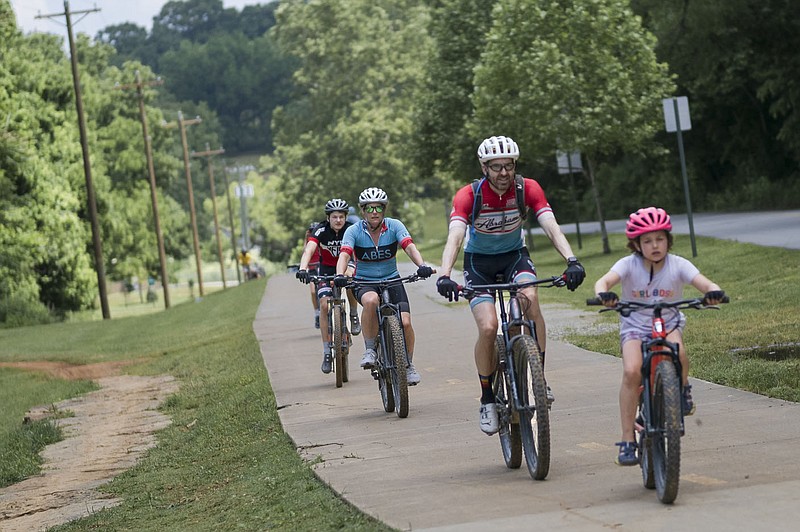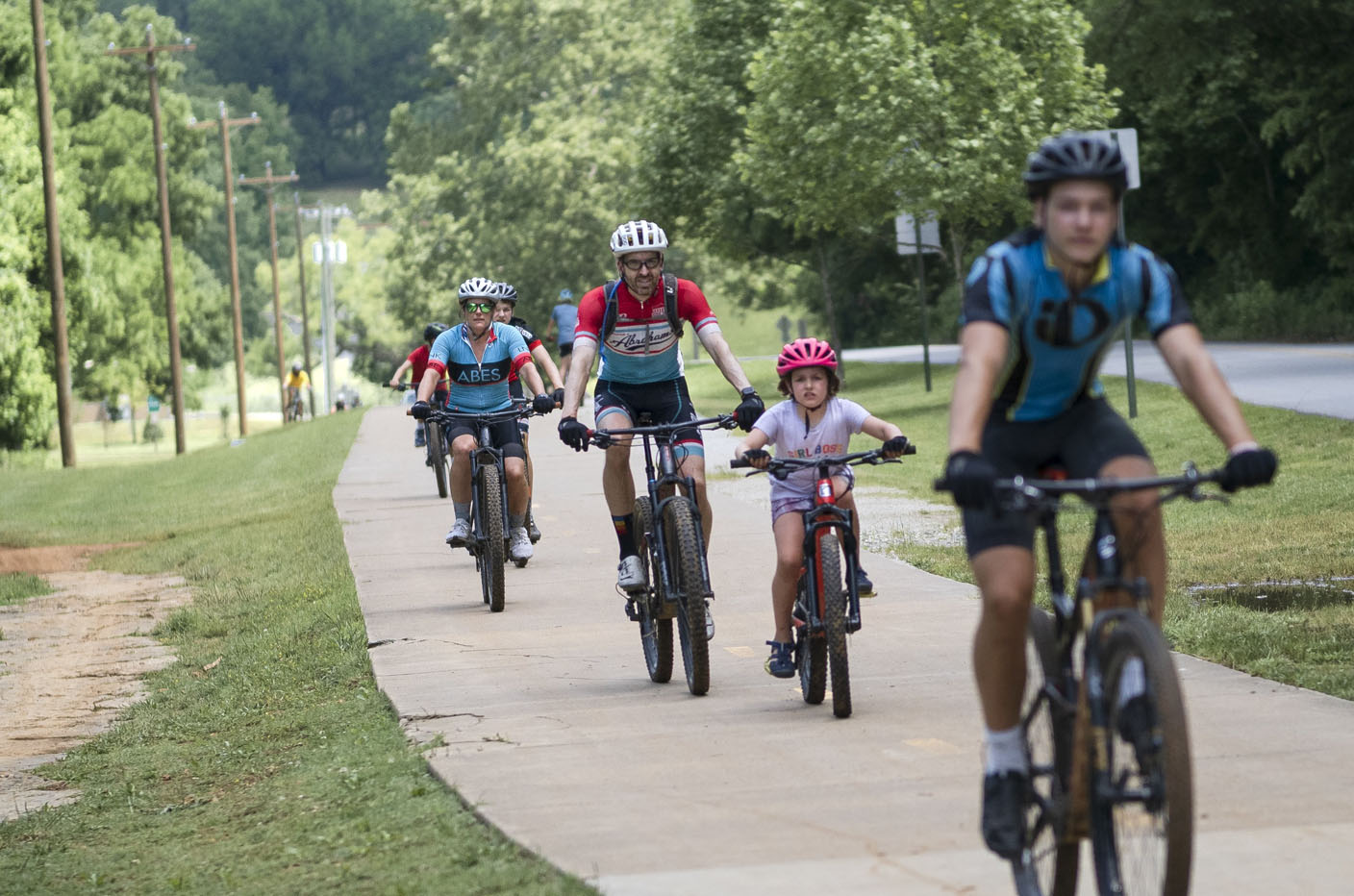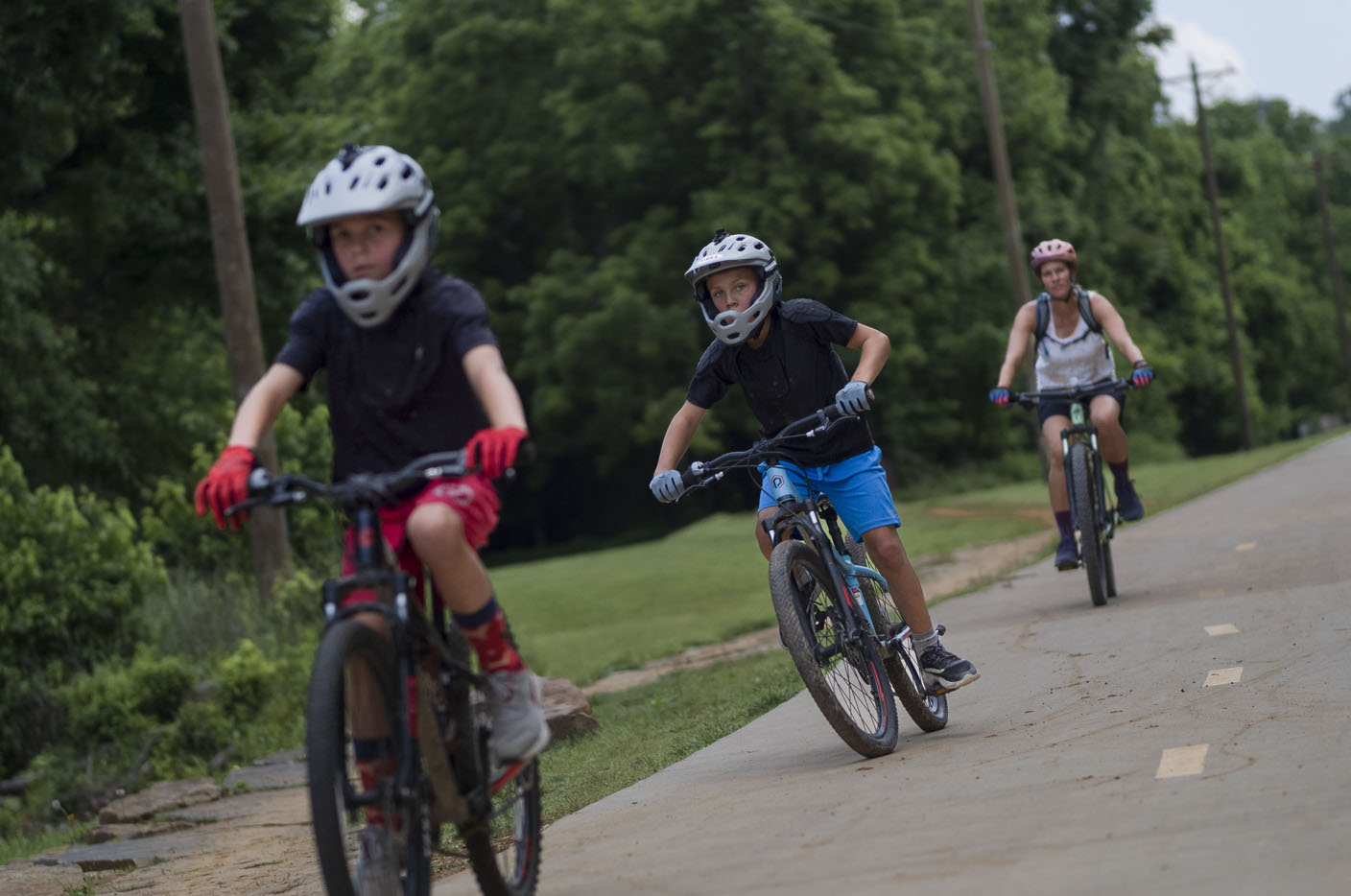FAYETTEVILLE -- More Northwest Arkansas residents are using the region's trail systems, but a new report by active transportation groups found members of minority groups and low-income people face barriers to trail use.
Trailblazers partnered with Equitable Cities and Bike.POC to look at the challenges to accessing bicycling, as well as the current use of trails by people in Northwest Arkansas.
Grants from the Walmart Foundation and the Walton Family Foundation made the research possible.
"The Northwest Arkansas Trails and Active Transportation Equity Report represents a step toward establishing a more equitable and sustainable transportation system in our region," said Prentis Grayson, a community organizer with Trailblazers. "We trust this report will be a valuable resource for community leaders, policymakers and advocates as we work collaboratively to create a more connected, healthy and vibrant Northwest Arkansas."
The report has three components designed to explore perceptions of access, barriers to use and how people choose to move throughout the region's paved trails and active transportation network.
Active transportation is any form of human-powered transportation, such as walking, cycling, using a wheelchair, in-line skating, skateboarding or using a scooter. An active transportation network consists of sidewalks, trails and bicycle facilities to provide clear paths and connections to important destinations -- just like streets and roads do for motorized vehicles.
"When I think of the average cyclist, I think of someone that is as far away from my demographic as possible. I envision an upper-middle-class white man that wears tight bicycling gear," said one Black focus group participant.
"We only see Caucasians riding bicycles," a Marshallese focus group participant said, "and it seems like it is their thing and what they are supposed to do. A lot of images portray this online."
Those perceptions have some elements of truth behind them based on data on who is using the region's trails the most, according to the report.
Among the groups surveyed, people reporting as non-Hispanic white were the most frequent users of trails. Survey results showed 75% of respondents using the trails daily and 74% using them once or twice a week were white.
Hispanic populations were more likely to use the trails once or twice a month (8%), and Native Americans were more likely to use them once or twice yearly (5%).
There is also a notable difference in trail use frequency between genders. Females were more likely to use the trails once or twice a month (65%) and once or twice a year (73%), while males were less likely to use the trails at these frequencies (34% and 18%), respectively.
The data revealed most of the respondents were those with incomes between $70,001 and $100,000 and those with incomes over $100,000.
The highest frequency of daily use was seen in the highest income bracket, with 42% of those earning more than $100,000 using the trails daily.
In contrast, those with incomes less than $25,000 were the least frequent users, with only 2% using the trails daily. Once or twice a week was a common frequency of use across all income levels, with the highest percentage of users falling within the $70,001 to $100,000 income bracket.
Lastly, 40% of individuals with incomes less than $70,000 said they never use the trails, while only 20% of those with incomes greater than $100,000 never use them.
"One major surprise would be some of the responses on our focus groups," said Grayson, who is Black. "Even me, being from a marginalized community, I didn't realize some of the barriers that other people expressed like being a certain distance away from a trail but not having the ability to buy a bicycle to use the infrastructure."
METHODOLOGY
The study for the report looked at marginalized and underserved populations, which it defined as groups of people who are often excluded from activities because of factors like their race, gender, sexual orientation, disability or socioeconomic status. They often face discrimination and have limited access to resources and opportunities, according to the report.
"I call it the tip of the spear approach," said Bea Apple, with Bike.POC. "If we can work to garner feedback and assess how infrastructure is for the most marginalized person in our community; if we start from that point and work to change it from there, we're much more likely to be able to not leave people behind in the process."
Bike.POC describes itself as a cycling group where BIPOC, LGBTQ+, and other marginalized people can come together in a space free of racism and misogyny.
The research is expected to help Trailblazers fulfill its mission and live up to its core values to embed diversity, equity and inclusion principles and practices in its outreach, programs, operations and governance to better represent, reflect and celebrate Northwest Arkansas' diversity, according to the report.
Trailblazers developed the research methodology in conjunction with Equitable Cities.
The NWA Trails and Active Transportation Equity Map is an online interactive map included in the report that uses recent census data and the NWA trails and active transportation network to examine patterns of inequity.
Four groups -- identified as Asian American, Black, Pacific Islander/Marshallese and Hispanic -- participated in focus groups and provided their perspectives on barriers to accessing trails and cycling infrastructure in Northwest Arkansas, including the lack of representation in media, road design and personal safety.
Last fall, Trailblazers conducted the NWA Paved Trail Inclusivity Survey after working with Equitable Cities to incorporate findings from the focus groups to create the questions. The survey was designed to help Trailblazers better understand barriers to access and use of the Razorback Greenway and other shared-use paved trails in Benton and Washington counties.
According to the survey, there is a discrepancy in how different ethnic groups use the trails.
White individuals use the trails more for leisure, whereas Hispanic and Native American people tend to use them more for commuting, according to the survey. Also, those with higher incomes use the trails more often while those who earn lower incomes use them less.
WHAT'S NEXT
It is important to assess where trails, bike lanes and sidewalks are now and where more are planned. The information should then be combined with data on where people are -- to understand their needs -- and to inform decision making, according to Apple.
"Once you do it, it's harder to undo," Apple said. "So, we thought this was a great opportunity to help nudge the direction toward something where active transportation, bike lanes, sidewalks, all of that stuff is accessible to all of the community."
Based on the results of the equity analysis, three focus areas were identified within a community corresponding with "higher needs."
One observation was that trails have been built away from some of these communities, Grayson said.
"By no means do we think that it was intentional, but it ended up happening like this so we're going to take a broad look at where that is and see how we can maybe fill in a few of those gaps by working with the cities," he said.
In Bentonville, two areas were identified as the most socioeconomically disadvantaged area -- south of downtown, while a third neighborhood was identified as a traditionally underserved demographic largely disconnected from the active transportation infrastructure network by Arkansas 102.
In Rogers, there is an opportunity to complete disconnected portions of the active transportation network in two areas in north Rogers that will connect a high-need area with services and opportunities. A north-south connection also is needed to connect the densely populated area in the southeast.
In Springdale, the Razorback Greenway, Dean's Trail and Shiloh Trail all provide critical north-south connections. Springdale lacks a safe east-west connection, especially one that crosses Thompson Street. Two areas were identified in south Springdale that would provide critical connectivity to higher-needs residents. An east-west connection is equally important in north Springdale.
In Fayetteville, two areas were identified along the east side of Interstate 49. Despite the presence of schools and dense housing developments, the areas lack north-south connections to the larger active transportation network including Town Branch Trail to the south and Midtown Trail to the north. Additional traffic calming measures could be used in these areas as well. The third area is in southeast Fayetteville, which would benefit greatly from an east-west connection to the larger active transportation network.
In Siloam Springs, there is a great opportunity to connect and expand the active transportation network. Areas include downtown and the adjacent neighborhood as well as south central Siloam. No active transportation infrastructure exists in south Siloam and a north-south connection is needed to safely cross U.S. 412.
"We plan on sharing the report publicly and our recommendations. We do look forward to working with some of the cities [and] Regional Planning to see where we can either help them -- or the equity map -- can help guide some of the work that they are already doing," Grayson said.
Throughout the report, especially in the focus groups and survey, Trailblazers determined its community programs and outreach only impact some community partners and members of particular backgrounds. To expand its reach, Trailblazers launched an advisory council.
Grayson said this is the first year for the report, and plans are to do it annually.
"We know that it's not going to be overnight, big, major change but we're looking at working with the advisory council in hopes to make little changes, see progress and start removing barriers in the region."




